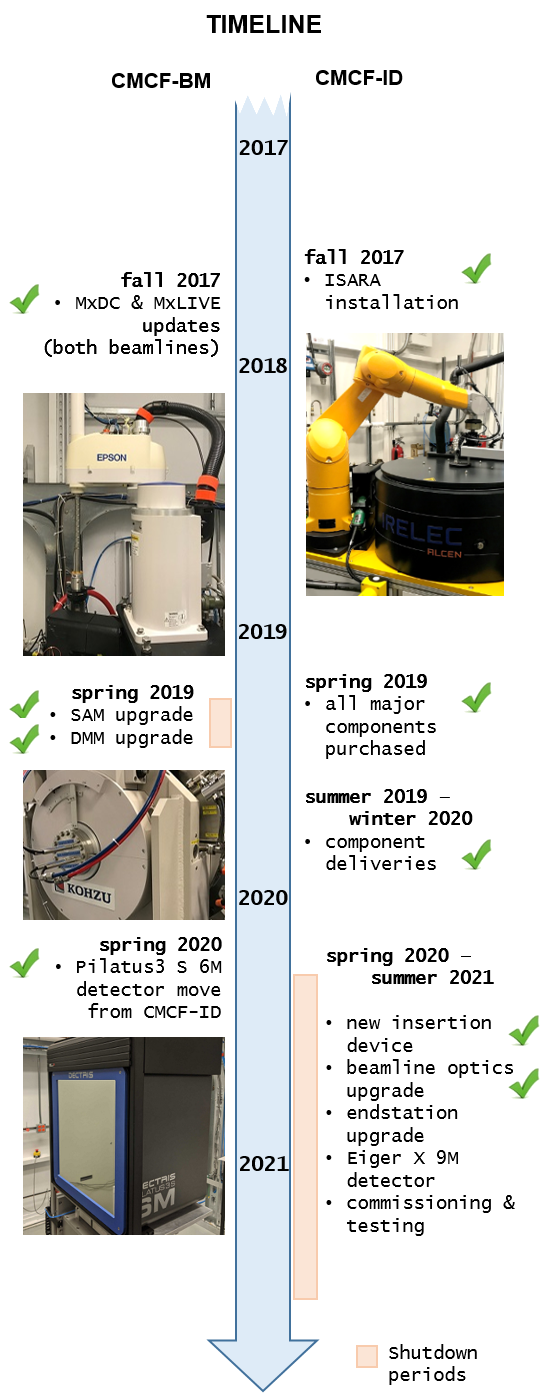1: Toward Cutting-Edge Science
Establishing advanced micro-beam capability for macromolecular crystallography at the CLS
This is a CFI project led by the Beamline Advisory Team leader Mirek Cygler (U of Saskatchewan), in collaboration with other Beamline Advisory Team members and principal users representing institutes from accross Canada including: Bhushan Nagar (McGill U), Zongchao Jia (Queen's U), Filip Van Petegem (U of British Columbia), Mark Glover (U of Alberta), Kenneth Ng (U of Calgary), Brian Mark (U of Manitoba), Emil Pai (U of Toronto), Alisdair Boraston (U of Victoria) and Alba Guarné (McMaster U).
The project secured funding in 2015 (see announcement here), with the goal of upgrading the CMCF-ID beam line; increasing the flux, reducing the beam focus size to micro-beam, improving the stability of the end-station and improving the data acquisition throughput using a faster detector and automounter. To accomplish these goals, the undulator is being replaced with a longer one, the optical layout is being changed, and the end station being rebuilt.
The new optics, which includes a new DCM/DMM monochromator and three new mirrors, will enable the beamline to achieve a focus spot size of 5 × 30 µm with a photon-flux of about 1 × 10^13 ph/s in a 5 µm focus spot, or up to 1 × 10^14 ph/s in pink-beam (1% ΔE/E) mode. Additionally, the endstation will be replaced with an MD2S microdiffractometer, while the previous Pilatus 6M detector (now on CMCF-BM) will be replaced with an Eiger 9M detector. The recently-upgraded ISARA automounter will continue to be a key component of the upgraded beamline.
In April 2019, the preliminary design report was completed. All major components including the insertion device (IVU), DCM/DMM, mirror systems, microdiffractometer, and Eiger detector were delivered between mid 2019 - early 2021.
The beamline was shut down for upgrades beginning during the spring 2020 facility shutdown period. The new insertion device was installed in the ring during this period and old beamline optical components removed. As of July 2021, all main components have been installed. We expect the beamline to be returned to service during late Summer 2021, as soon as commissioning and testing is complete. To alleviate the loss of beam time to users during this period, we are accommodating most experiments on the CMCF-BM beamline, which previously underwent a successful minor upgrade for higher flux and increased throughput.
2: CMCF-BM High-Flux Upgrade
Multi-layers for higher flux & a faster robot
This small project to upgrade the CMCF-BM Si-111 double-crystal monochromater (DCM) was initiated in January 2019 and completed in August 2019. The goal was to add a high flux mode to the beamline by incorporating a double-multilayer monochromator (DMM) inside the existing DCM chamber. The upgrade was successful and resulted in 2x more flux in DCM mode, and 40x more flux in DMM mode. The DMM mode has an energy range of 7 - 10.5 keV, with maximum flux at 8.157 keV.
Going forward, the CMCF-BM monochromator will operate in two modes. The high flux, or DMM mode, will be a pink-beam (0.45% ΔE/E), delivering the higher flux. In this mode, users are able to adjust the energy between about 7 - 10.5 keV. Experiments requiring a higher energy resolution or energies outside the range of the DMM will continue to be supported with the traditional DCM mode. Switching between the high-flux mode (DMM), and the traditional mode (DCM) is performed by staff (a process which normally takes approximately 5-10 minutes). Please confirm with your local contact as to which mode will be most appropriate for your work, or to change modes.
To complement the higher flux, the SAM Automounter software was also updated to support a faster throughput, with a duty cycle of about 25 seconds (previously 2.5 minutes). Additionally, the Pilatus 6M detector, previously on CMCF-ID, has been permanently moved to CMCF-BM. With these changes, CMCF-BM users are experiencing a significant increase in throughput.
Related Publications
Progress

The first major component of the CMCF-ID upgrade project arrived in August 2019. Pictured here is the new in-vacuum undulator being delivered to the CLS. Travelling first by ship and arriving in Saskatoon by train, the new undulator weighs approximately 12 tons and was installed in the storage ring during the spring 2020 shutdown. It will allow for a much stronger beam intensity at the sample position, enabling smaller beam sizes and faster data collections.
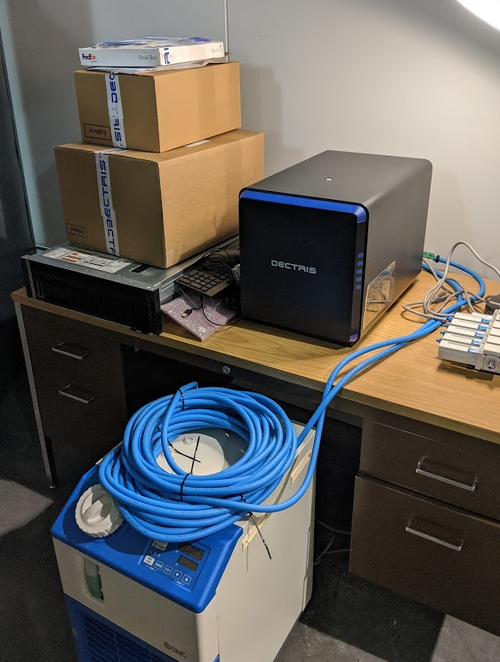
Eiger X 9M detector, delivered November 2019. It is physically smaller than the Pilatus 6M, but 10x faster and with higher pixel density. It will be installed at CMCF-ID, and the Pilatus 6M previously on the beamline was moved to CMCF-BM during the spring 2020 maintenance shutdown.
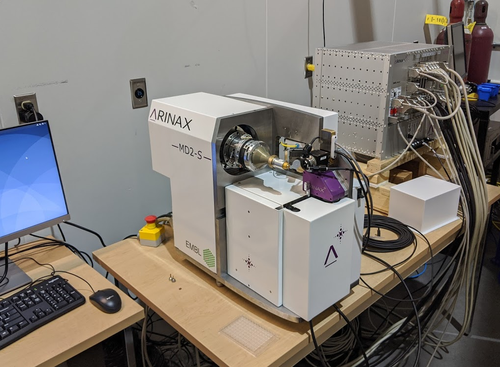
MD2S Micro Diffractometer delivered in November 2019, destined to be installed at CMCF-ID during the upgrade. Experiments will be able to take advantage of the very stable sample position, fast rotation speed, and selectable beam aperture sizes.
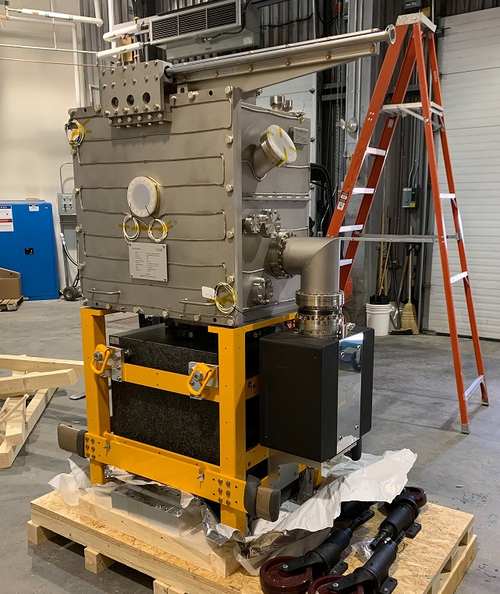
Delivery of the new CMCF-ID double crystal/multilayer monochromator, in October 2020.
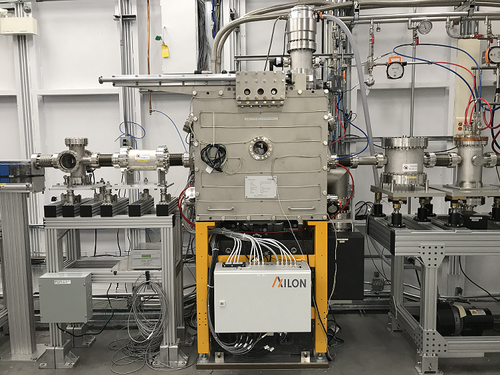
The newly-installed double crystal/multilayer monochromator, in March 2021. This major new component will allow for a very stable beam in two modes: a fixed-energy high-flux mode, as well as a lower flux mode with variable-energy for SAD/MAD experiments.
